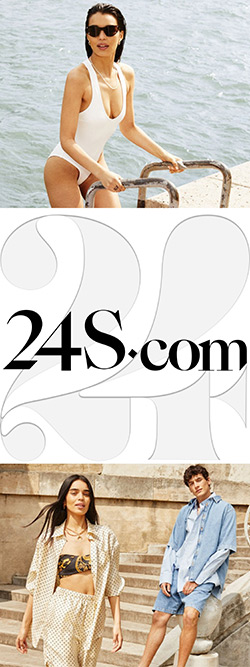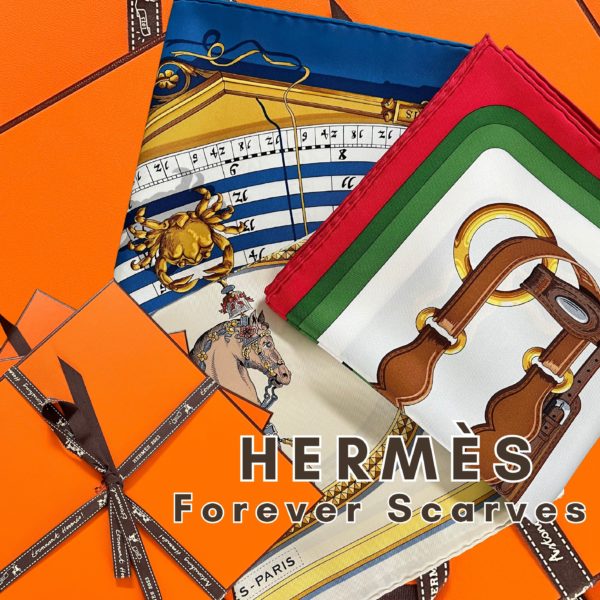I love Hermès scarves. This essential accessory complements any outfit. It can be worn many ways – around your neck, as a top, at the waist or as a headscarf!
This year, for the first time, the French Maison is launching the so-called «forever scarves» (carrés de toujours). They are heritage scarves, authentic and alive, that honor the original design in a unique and emblematic color. Neither reworked nor redesigned, they are presented in all their simplicity, true to the original drawing of the artist.
Each year from now three designs will follow, in 2023 those ones below are available:
GRAND APPARAT Forever Scarf 90
Designed by Jacques Eudel in 1962
Color: Crème / Gold / Multicolore
This design showcases various pieces of ceremonial harnesses and saddles, which were adornments used for parades and celebrations. The luxuriousness of these embossed leather ceremonial harnesses, trimmed with fringes or braids and adorned with bronze elements, laurel leaves, royal emblems and coats of arms, indicates the nobility of the person being transported as well as the importance of the event. Held together by pyramid studs and braiding, the central picture was inspired by the design of a horse harnessed to a carriage, which was created for the coronation of Louis XVIII.
COACHING Forever Scarf 90
Designed by Julie Abadie in 1976
Color: Rouge / Vert / Blanc
This design is composed of different elements used for harnessing a horse. It depicts Hermès’ original expertise as a harness maker, as well as the elegant equestrian world for which the Maison has become renowned. The background features a blanket lined with a wide wool braid. In the lower right and upper left corners, dress sheets are revealed: blankets which are thrown over horses after exercise or racing to protect them from the cold. In the 17th century, coaches were imposing horse-drawn carriages driven by coachmen that transported passengers and luggage.
ASTROLOGIE Forever Scarf 90
Designed by Françoise Façonnet in 1973
Color: Bleu Cobalt / Vieil Or / Blanc
It was in Mesopotamia that the first calendar was born, around the third millennium BC, followed by the signs of the zodiac. They segmented the sky into twelve sequences which the sun takes one year to pass through. Linked to the lunar cycle and particular planets in the galaxy, they inspired many beliefs and shaped our measurement of time. Here, Gianpaolo Pagni adds stamped motifs to an emblematic scarf designed in 1963 by Francoise Faconnet, inspired by a Renaissance-era astrological table conserved at the Musee de l’Observatoire in Paris. The Italian illustrator’s geometric prints overlap with complex symbols which only the enlightened can decipher.
LoL, Sandra
Photos: © Sandra Bauknecht and © Hermès
DISCLOSURE: We may earn commission from links on this page, but I only recommend products I love. Promise!









